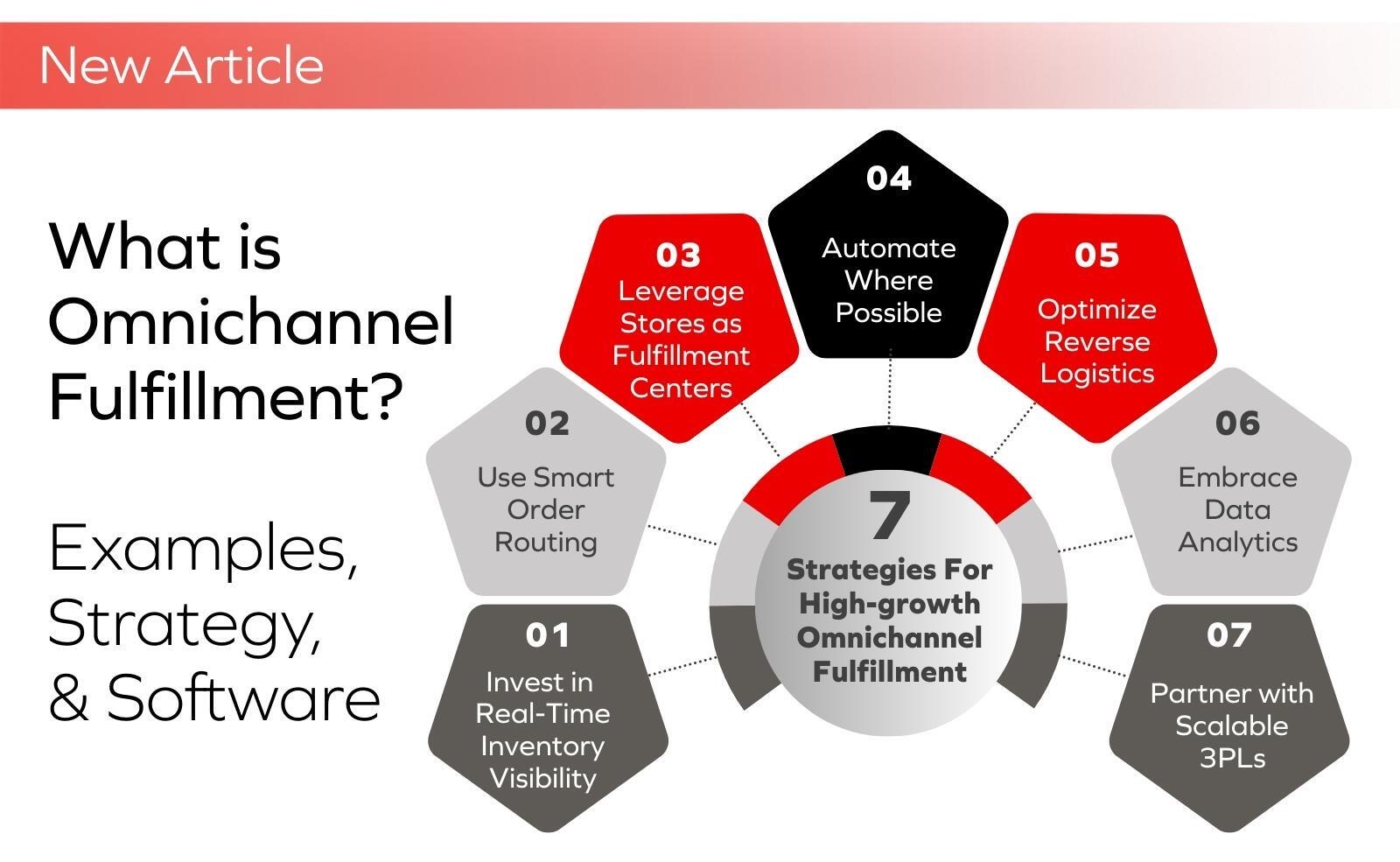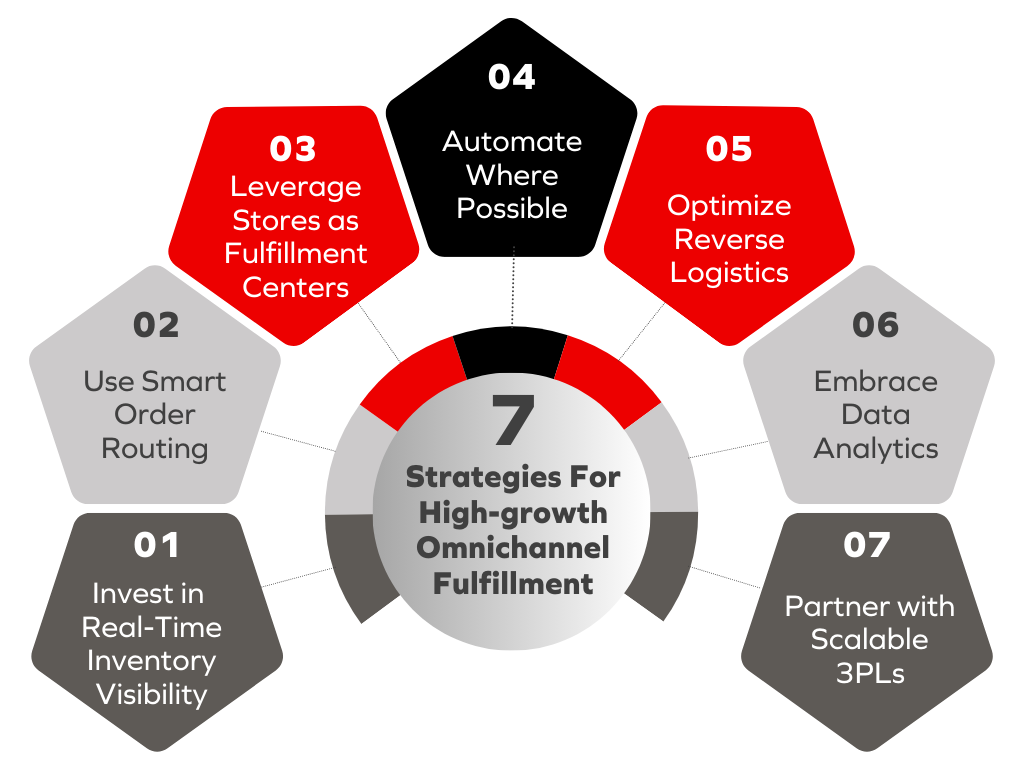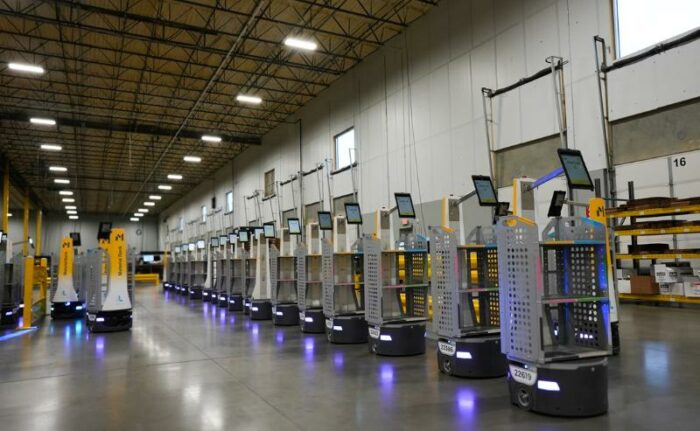
Today’s companies are under increasing pressure to meet rising expectations for order accuracy, next-day delivery, and exceptional customer service. To keep up, many are turning to omnichannel fulfillment software. In this post, we’ll break down the basics of omnichannel fulfillment, explore the top challenges, and share proven strategies to overcome them. Let’s dive in!
Article Overview:
- What is Omnichannel Fulfillment?
- What is the Difference Between Multichannel and Omnichannel Fulfillment?
- What are the Benefits of Omnichannel Fulfillment?
- What are the Challenges of Omnichannel Fulfillment?
- Strategies For High-growth Omnichannel Fulfillment
- Key Software for Omnichannel Fulfillment
What is Omnichannel Fulfillment?
Omnichannel fulfillment is the process of managing and delivering customer orders across multiple sales channels in a unified way. Whether a customer orders from an eCommerce site, a physical store, a mobile app, or a third-party marketplace, omnichannel fulfillment ensures they get a consistent experience—fast, accurate delivery, flexible return options, and seamless customer service. This strategy synchronizes inventory, order processing, and logistics across all platforms, so customers can buy, receive, and return products however they prefer.
What is the Difference Between Multichannel and Omnichannel Fulfillment?
While “multi” and “omni” sound like they might be synonyms, they are actually quite different in how they are executed. Multichannel fulfillment is when products are sold on multiple platforms (like online, in-store, or via marketplace), but each channel operates in a silo. This means inventory and logistics might not be connected across those channels. On the other hand, omnichannel fulfillment is fully integrated. It connects all channels, providing a centralized view of inventory and a seamless experience for both the customer and the business. With omnichannel fulfillment, when an item is purchased in a physical store, that sale is reflected across all channels versus just within that store’s ecosystem.
What are the Benefits of Omnichannel Fulfillment?
Omnichannel fulfillment benefits both the business and the consumer. Businesses can enjoy everything from increased sales opportunities to greater agility, while consumers enjoy an improved shopping experience, faster delivery times, and more. Here’s a breakdown.
Omnichannel Fulfillment Benefit #1: Improved Customer Experience
By having access to inventory available online, in stores, and in warehouses, customers get more choices in how they buy, receive, and return products, providing a smoother and more personalized shopping journey.
Omnichannel Fulfillment Benefit #2: Faster Delivery Times
Omnichannel fulfillment software allows orders to be filled from the closest location, be it in a store or warehouse, reducing waiting times and shipping costs, and delivering consumers their orders faster than ever before.
Omnichannel Fulfillment Benefit #3: Better Inventory Utilization
With integrated inventory management across all locations, operations are able to easily prevent overstocking and stockouts by sharing visibility across all channels.
Omnichannel Fulfillment Benefit #4: Increased Sales and Loyalty
The easier it is for a consumer to complete a purchase, the more likely they are to come back for more. A seamless shopping experience encourages repeat purchases and brand loyalty.
Omnichannel Fulfillment Benefit #5: Greater Agility and Scalability
With omnichannel fulfillment software, businesses can optimize processes across various sales channels. This helps businesses quickly adapt to demand shifts throughout its ecosystem and scale operations more easily.
Omnichannel Fulfillment Benefit #6: Enhanced Data and Insights
By collecting data at all points of sales, operations gain a holistic view of customer behavior, inventory trends, and channel performance. This supports smarter forecasting, merchandising, and supply chain decisions.
Omnichannel Fulfillment Benefit #7: Lower Fulfillment Costs Over Time
By shipping from the most geographically efficient location (store, warehouse, etc.), companies can reduce last-mile delivery costs, which can add up over time. Omnichannel fulfillment also helps operations avoid markdowns and liquidation by improving sell-through across the entire network.
What are the Challenges of Omnichannel Fulfillment?
Omnichannel fulfillment opens the door to faster, more flexible service—but it also comes with its share of challenges. Managing multiple sales channels, syncing inventory in real time, and ensuring smooth last-mile delivery can put serious strain on warehouse operations. Add to that the complexity of returns and fluctuating customer expectations, and it’s clear that success requires more than just good intentions. Here are a few key challenges to keep in mind as you build your omnichannel fulfillment strategy:
Omnichannel Fulfillment Challenge #1: Inventory Visibility
Maintaining accurate, real-time inventory data across multiple channels and locations is complex and requires robust technology. Without accurate inventory visibility throughout all channels, omnichannel is seemingly impossible.
Omnichannel Fulfillment Challenge #2: Technology Integration
Seamless technology integration is critical for the success of omnichannel fulfillment. This means the operation’s Warehouse Management System (WMS), Transportation Management System (TMS), Enterprise Resource Planning (ERP) system, Order Management System (OMS), and Point of Sale (POS) system must all communicate with each other flawlessly.
Omnichannel Fulfillment Challenge #3: Operational Complexity
Omnichannel fulfillment means operations are taking on more responsibilities, such as managing returns, reverse logistics, and order routing from multiple locations. With increased complexities comes the need for better organization and increased oversight.
Omnichannel Fulfillment Challenge #4: Higher Costs Without Efficiency
For omnichannel fulfillment to be effective, it must be optimized to fulfill orders efficiently from every node. Without proper coordination, rising shipping, labor, and operational costs can quickly turn omnichannel fulfillment into a drain on both time and money.
Omnichannel Fulfillment Challenge #5: Data and Channel Coordination
Similar to inventory management, aligning pricing, promotions, and product availability across platforms demands constant synchronization.
Strategies For High-growth Omnichannel Fulfillment

According to Gartner, “The future of retail requires that the retailer rises above the channel to understand how the customer browses, transacts, acquires and consumes in order to gain revenue and market share.”* But considering that many companies’ supply chains predate omnichannel, meeting customer needs may require a complete supply chain transformation. So, what strategies should you consider?
Omnichannel Fulfillment Strategy #1: Invest in Real-Time Inventory Visibility
Implement a robust WMS or inventory management platform that offers a unified view across all sales and fulfillment locations.
Omnichannel Fulfillment Strategy #2: Use Smart Order Routing
Automatically route orders to the most cost-effective and fastest fulfillment node based on inventory levels and customer location.
Omnichannel Fulfillment Strategy #3: Leverage Stores as Fulfillment Centers
Enable ship-from-store or pickup-in-store to maximize store inventory and reduce delivery times.
Omnichannel Fulfillment Strategy #4: Automate Where Possible
Use automation in picking, packing, and returns processing to handle increased order volume efficiently.
Omnichannel Fulfillment Strategy #5: Optimize Reverse Logistics
Streamline the returns process with easy drop-off points, instant refunds, and integrated returns management.
Omnichannel Fulfillment Strategy #6: Embrace Data Analytics
Continuously analyze performance across channels to improve forecasting, staffing, and resource allocation.
Omnichannel Fulfillment Strategy #7: Partner with Scalable 3PLs
Consider partnering with third-party logistics partners who can support omnichannel complexity and scale with your growth.
Key Software for Omnichannel Fulfillment
At Made4net, we empower businesses to deliver exceptional omnichannel fulfillment through flexible, scalable solutions. Our omnichannel fulfillment software is built to support the fast-paced demands of today’s commerce—whether it’s in-store purchases, online orders, click-and-collect, or curbside pickup.
With Made4net, you can:
- Manage and fulfill orders across multiple channels from a single, unified platform
- Apply dynamic rules to optimize inventory allocation and order routing
- Reduce fulfillment errors while meeting tight shipping SLAs
- Streamline picking and replenishment with intelligent, automated workflows
- Optimize picking paths to reduce travel time and boost productivity
- Improve inventory accuracy with real-time scanning at the pallet, case, or item level
- Seamlessly support flexible fulfillment options like BOPIS (buy online, pick up in store)
- Accelerate deployment and quickly adapt to evolving market demands
Whether you’re scaling operations or navigating rapid shifts in customer expectations, Made4net gives you the control, agility, and performance you need to stay ahead.
Omnichannel Fulfillment Example: IKEA
The most successful retailers are continually evaluating and investing in the way they service their customers. One example is the Ingka Group, the largest IKEA retailer, which has long been recognized as a leader in fulfillment. Ingka is pioneering next generation retail fulfillment to significantly enhance how they interact with their consumers in a new era of omnichannel commerce and provide a more flexible way to shop, order, and deliver products in a sustainable way.
To create a seamless customer experience between online and offline shopping for their customers, the company is developing innovative ways to improve in-store and online support. Part of this includes redesigning the stores to act as multifunctional hubs to fulfill customer orders, offering various services (such as click & collect) to be more accessible and convenient, as well as enhancing capabilities for better accuracy, quality and visibility of inventory
The flexibility and the uniqueness of the Made4net platform were key to Ingka selecting Made4net for its strategic digital supply chain transformation, including:
- Robust Functionality on a flexible and adaptable platform: Made4net offered a comprehensive set of highly configurable features, addressing Ingka Group’s specific needs related to inventory management, order accuracy, and omnichannel integration. The adaptable platform provides the flexibility to evolve with the changing retail landscape.
- Proven Track Record: Made4net showed a successful track record in deploying order fulfillment solutions for organizations all over the world.
- Adaptability & Scalability: The ambition of Ingka Group and its transformational Fulfillment Management Solution initiative was aligned with the Made4net solution, including the ability to scale the solution to accommodate their omnichannel network and global footprint:
- Shared technical vision that keeps pace with change. With new and improved software, tools and data, Ingka Group’s 40,000+ coworkers in fulfillment can better serve its customers, meeting the current and future business needs.
- Integration: Seamless integration capabilities with existing systems, including online platforms, inventory management tools, and point-of-sale systems.
As Ingka Group continues to build a better everyday life for their customers and connect seamlessly across channels, Made4net’s omnichannel fulfillment software is playing a pivotal role in enhancing both customer experience and operational efficiency.
If omnichannel fulfillment is on your roadmap, check out our whitepaper: Omnichannel Strategies for Seamless Shopping Experiences. Then reach out to our experts for guidance through the WMS selection and implementation process—we’re here to help you succeed.
*Gartner Quick Answer: What Is Unified Retail Commerce, and Why Does It Matter? Published 20 May 2022 By Analyst(s): Max Hammond


